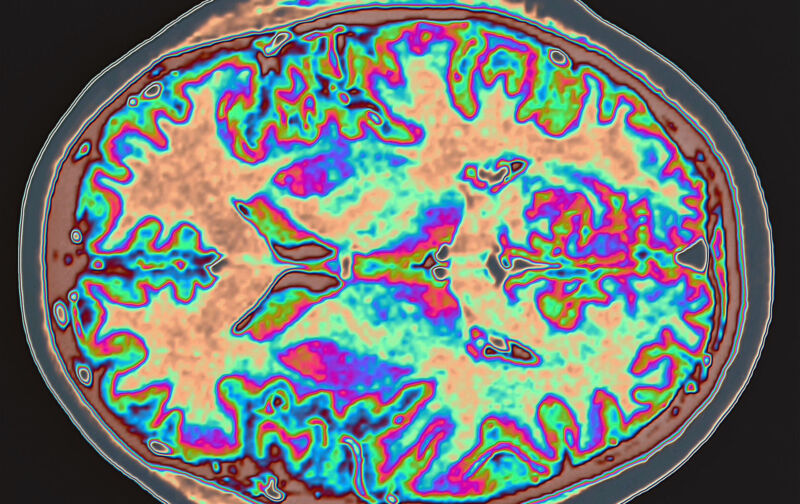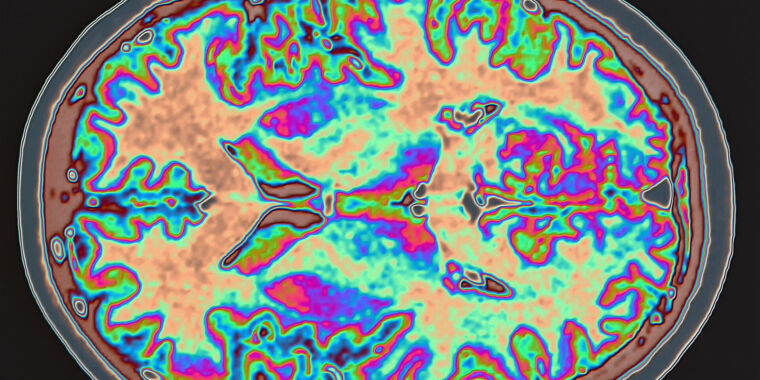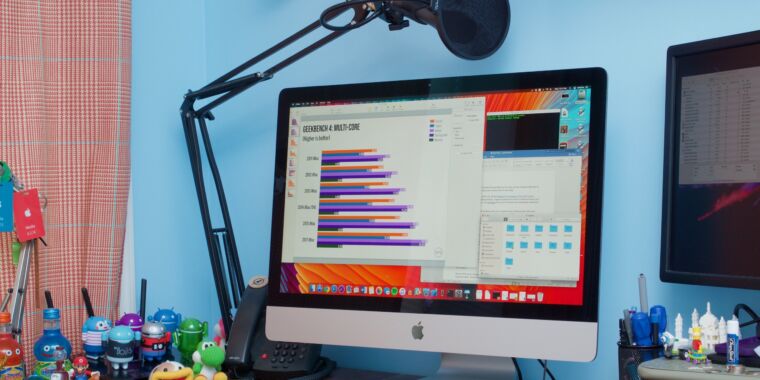
Infection by SARS-CoV-2 causes a dizzying array of symptoms beyond the respiratory distress that is its most notable feature. These range from intestinal distress to blood clots to the loss of smell, and symptoms vary wildly from person to person.
Figuring out exactly what the virus does inside the human body is likely to take years. But we got a bit of data this week from a detailed study of images of the brains of COVID patients. The images were taken before and after the patients were infected. The results suggest some regions of the brain connected to the olfaction system may shrink slightly in the wake of an infection, although the effect is minor and its consequences are unclear.
Hitting the biobank
This is yet another study that relies on the UK’s Biobank. The Biobank lets users of the UK’s National Health Service volunteer to link their medical records to their genetic profiles and provide medical researchers with a resource of large, population-level studies of risk. In this case, a research team largely based in the UK combed the Biobank for people who had had brain scans prior to a SARS-CoV-2 infection.
There are plenty of reasons to focus on brains and COVID. Loss of smell is the most obvious. While we don’t currently understand the biological reason for this, SARS-CoV-2 clearly infects the nasal passages, where the nerve cells that perceive odorant molecules are. From there, just one nerve bundle connects to areas of the brain that process the signals that we perceive as our sense of smell. This nerve bundle could potentially transmit the virus directly to the brain.
In addition to this direct connection, an infection can alter the brain by indirect means. These include setting off an inflammatory response in the brain or damage due to the blood clotting seen in some patients. But there are reasons to think something’s going on, as there have been reports of a poorly defined “brain fog” that some people experience as part of long COVID. A number of small studies have also described damage to specific areas of the brain following infection.
So, to get a clearer picture of the brain, the researchers got over 400 people who had received a brain scan prior to a SARS-CoV-2 infection to get another scan afterwards. And the researchers paired those patients with several hundred people who had not tested positive for the virus to also get brain scans and serve as controls.
Shrinkage
Using a software package that is able to compare two brain images, the researchers looked for changes in specific structures. They performed two separate analyses. One was hypothesis driven, in that it was limited to all the structures that are known to be one or two connections removed from the olfactory nerves in the nose. The second was an open-ended search for any brain structures showing a difference between the before and after scans.
The software did find statistically significant differences between the two time points in patients who had been infected, but the differences were generally small. Various regions in the brain shrank, typically by something on the order of 0.2 to 2.0 percent—a difference that would normally take about five years to occur due to the natural decline that occurs with aging. The difference appeared to be due to changes in the brain’s “gray matter”—the bodies of the nerve cells themselves, rather than the white matter used to establish connections between cells.
Most of these changes were seen in over half of the infected individuals. So this isn’t a case where only a few people experienced large-scale changes that threw the numbers off. Similar results were seen when the 15 patients who had required hospitalization were removed and the data reanalyzed. That means the changes don’t seem to require a severe case of COVID-19.
About half the areas identified in the general analysis were also identified in the hypothesis-drive analysis, suggesting a fairly strong correlation between these changes and a connection to the olfactory system.








